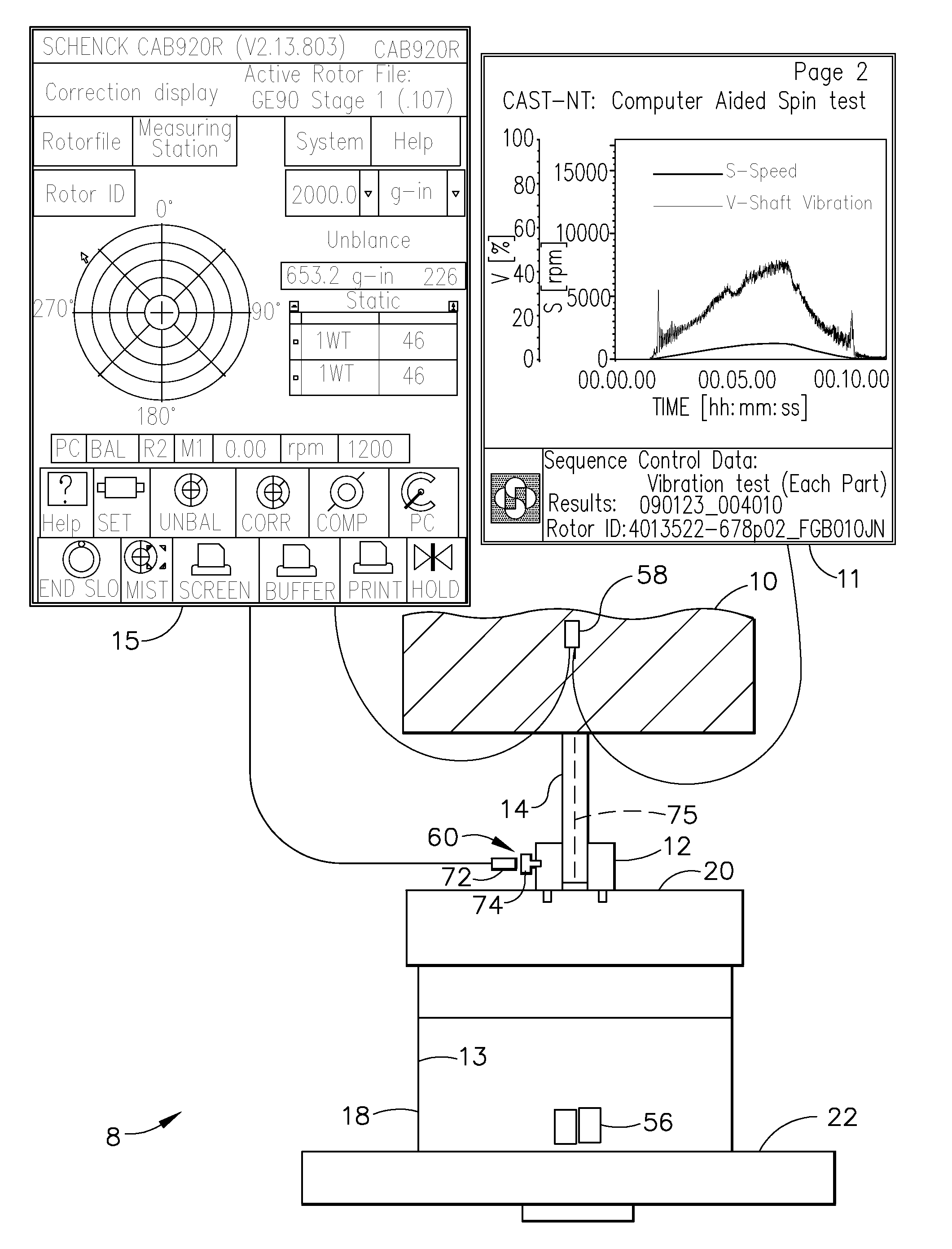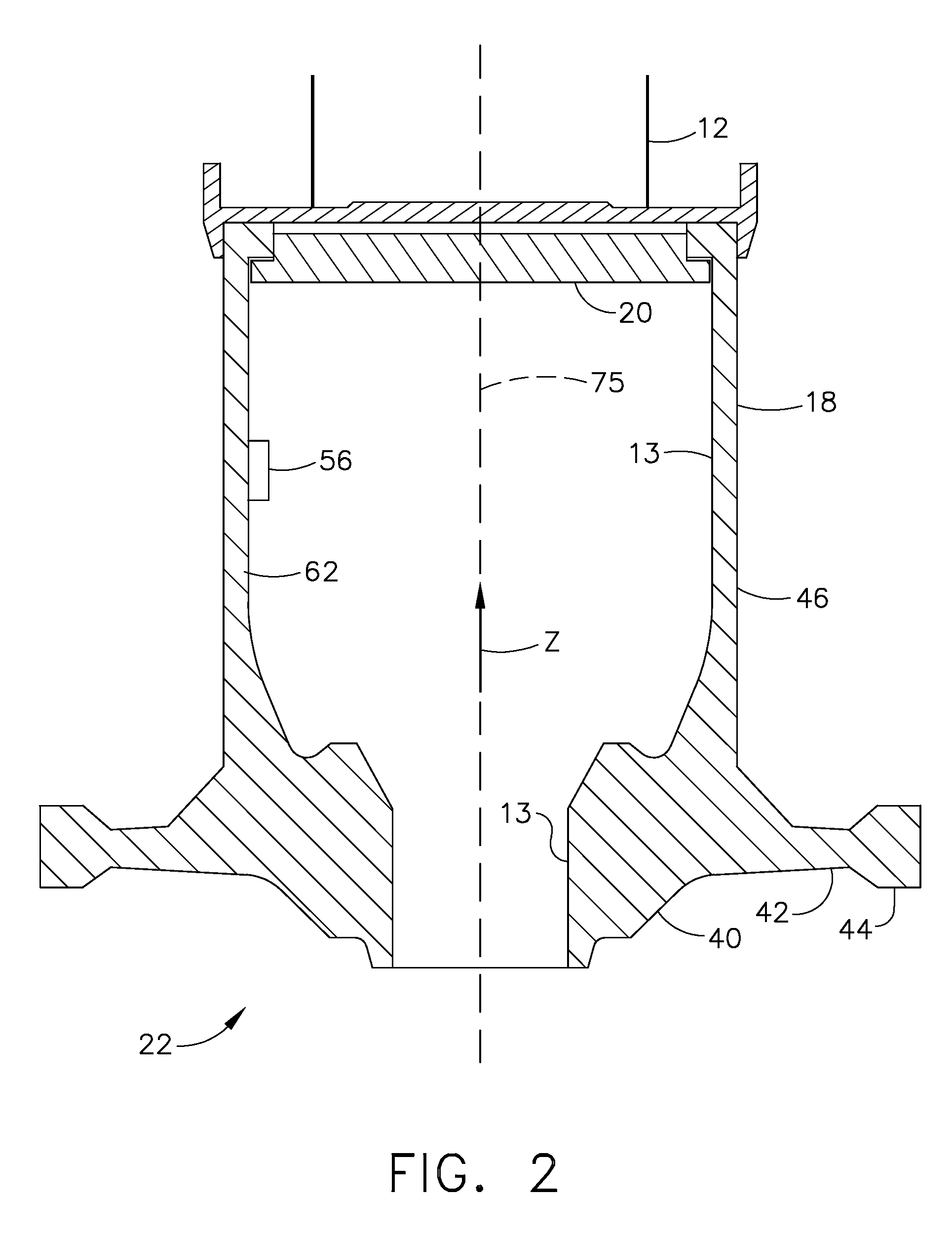Method and apparatus for pre-spinning rotor forgings
a technology of rotor forging and pre-spinning process, which is applied in the direction of weighing apparatus for materials with special properties/forms, fluid pressure measurement by mechanical elements, special data processing applications, etc., can solve the problems of affecting the clearance between the rotor and the surrounding casing, the rotor may undetectedly expand, and the conventional pre-spinning process is a time-consuming and costly process, so as to prevent over-spinning and relieve the residual stress of forging
- Summary
- Abstract
- Description
- Claims
- Application Information
AI Technical Summary
Benefits of technology
Problems solved by technology
Method used
Image
Examples
Embodiment Construction
[0027]Illustrated in FIG. 1 is a pre-spinning system 8 including an exemplary pre-spin machine 10 having a spin arbor 12 connected to a spindle 14 of the pre-spin machine 10. The spindle 14 has an axis 75 of rotation, is vertically oriented, and is held at some distance from an annular rotor forging 18 as is well known in the art. The spin arbor 12 is attached to a fixture 20 for holding the rotor forging 18 which has an axial bore 13 illustrated in cross-section in FIG. 2. The pre-spin machine 10 includes at least one controller (two are illustrated herein).
[0028]The pre-spin machine 10 illustrated herein is unique because it is designed to and is capable of both spinning rotor forgings to very high rotational speeds in ranges between 5,000 RPM to 18,000 RPM in order to relieve forging induced residual stresses in the rotor forgings and balance a spinning assembly 22 which includes the rotor forging 18, spindle 14, spin arbor 12, and the fixture 20 while they are attached to the pr...
PUM
| Property | Measurement | Unit |
|---|---|---|
| residual stresses | aaaaa | aaaaa |
| rotational speed | aaaaa | aaaaa |
| weight | aaaaa | aaaaa |
Abstract
Description
Claims
Application Information
 Login to View More
Login to View More - R&D
- Intellectual Property
- Life Sciences
- Materials
- Tech Scout
- Unparalleled Data Quality
- Higher Quality Content
- 60% Fewer Hallucinations
Browse by: Latest US Patents, China's latest patents, Technical Efficacy Thesaurus, Application Domain, Technology Topic, Popular Technical Reports.
© 2025 PatSnap. All rights reserved.Legal|Privacy policy|Modern Slavery Act Transparency Statement|Sitemap|About US| Contact US: help@patsnap.com



